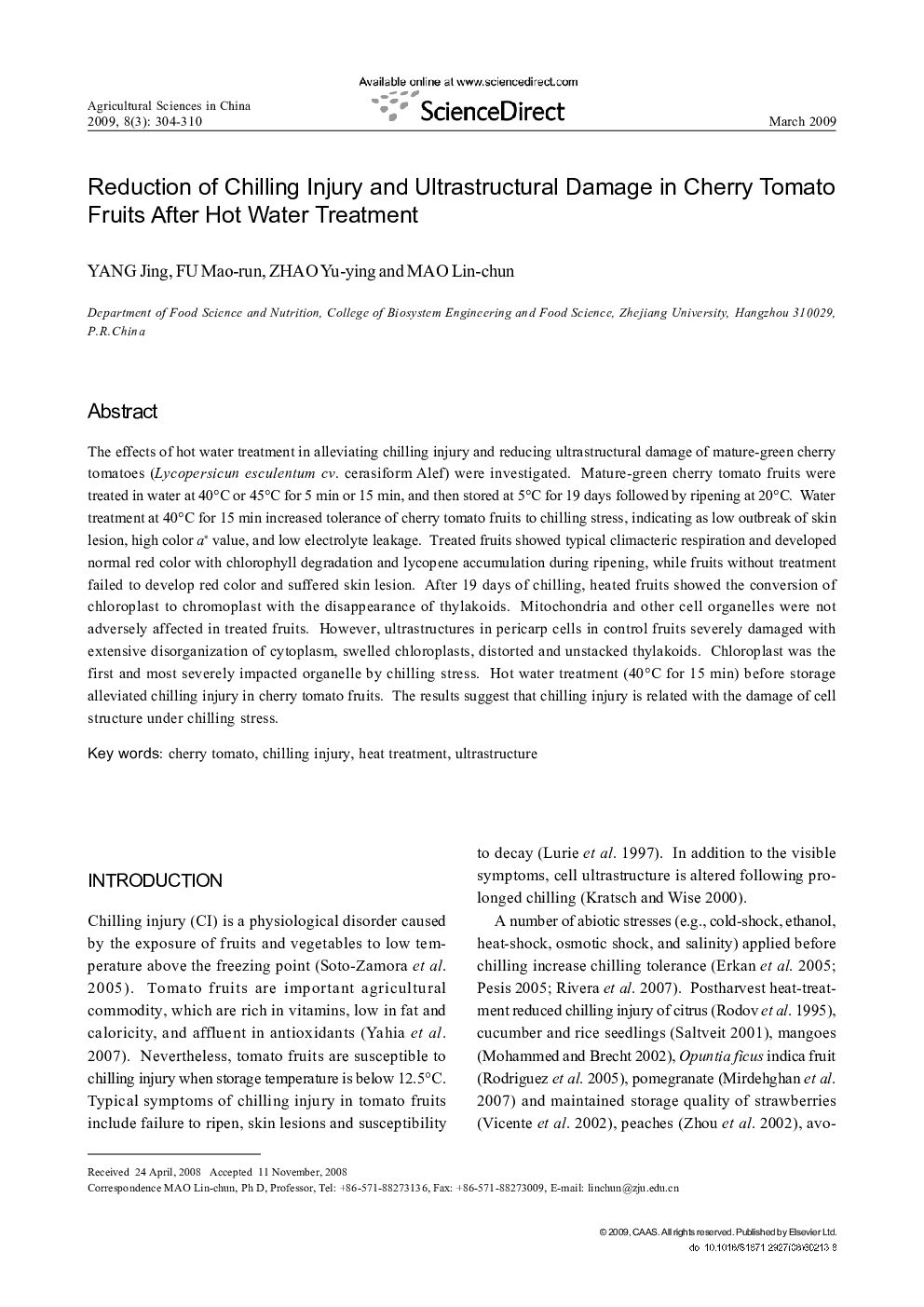| Article ID | Journal | Published Year | Pages | File Type |
|---|---|---|---|---|
| 4490405 | Agricultural Sciences in China | 2009 | 7 Pages |
The effects of hot water treatment in alleviating chilling injury and reducing ultrastructural damage of mature-green cherry tomatoes (Lycopersicun esculentum cv. cerasiform Alef) were investigated. Mature-green cherry tomato fruits were treated in water at 40°C or 45°C for 5 min or 15 min, and then stored at 5°C for 19 days followed by ripening at 20°C. Water treatment at 40°C for 15 min increased tolerance of cherry tomato fruits to chilling stress, indicating as low outbreak of skin lesion, high color a* value, and low electrolyte leakage. Treated fruits showed typical climacteric respiration and developed normal red color with chlorophyll degradation and lycopene accumulation during ripening, while fruits without treatment failed to develop red color and suffered skin lesion. After 19 days of chilling, heated fruits showed the conversion of chloroplast to chromoplast with the disappearance of thylakoids. Mitochondria and other cell organelles were not adversely affected in treated fruits. However, ultrastructures in pericarp cells in control fruits severely damaged with extensive disorganization of cytoplasm, swelled chloroplasts, distorted and unstacked thylakoids. Chloroplast was the first and most severely impacted organelle by chilling stress. Hot water treatment (40°C for 15 min) before storage alleviated chilling injury in cherry tomato fruits. The results suggest that chilling injury is related with the damage of cell structure under chilling stress.
